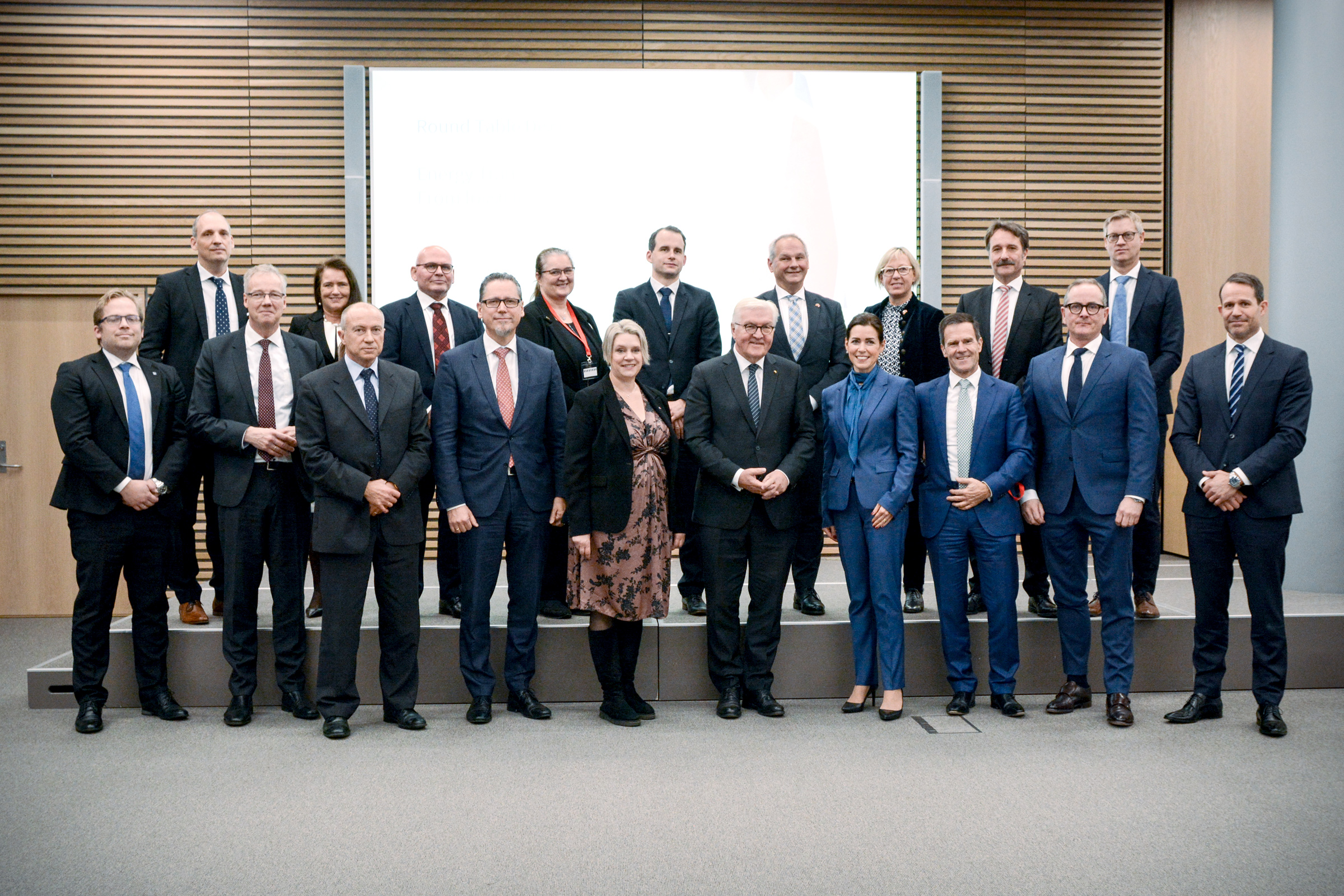HeidelbergCement CEO underlines focus on CCU/S during state visit of the German Federal President to Norway
- Dominik von Achten, Chairman of the Managing Board of HeidelbergCement, underlined the company’s focus on Carbon Capture and Utilisation or Storage (CCU/S) as an important element of its decarbonisation strategy during German Federal President Frank-Walter Steinmeier’s state visit to Norway.
- HeidelbergCement is building the world’s first full-scale carbon capture facility in Norway at the Brevik cement plant, aiming to capture 400,000 tonnes annually or 50% of the plant’s emissions from 2024 onwards.
- The experience gained in Norway will be a significant benefit for the deployment of carbon capture technology at a large scale at other HeidelbergCement plants.
- HeidelbergCement targets up to 10 million tonnes of CO2-reduction with several CCU/S projects already underway by 2030.
Dr. Dominik von Achten, Chairman of the Managing Board of HeidelbergCement, was part of the official delegation accompanying German Federal President Frank-Walter Steinmeier on his state visit to Norway on 4 and 5 November. HeidelbergCement is currently building the world's first full-scale carbon capture facility at a cement plant. The facility located at the Brevik cement plant of the Norwegian subsidiary Norcem will be operational in 2024 and capture 400,000 tonnes annually or 50% of the plant’s emissions.
As part of the state visit, Dr. Dominik von Achten participated in a roundtable event at the Norwegian classification society DNV on the topic ”Energy Transition – From Fossil Fuels to Renewables,“ opened by Frank-Walter Steinmeier and the Norwegian Minister of Petroleum and Energy Marte Mjøs Persen. Dr. Dominik von Achten underlined HeidelbergCement’s strategic focus on Carbon Capture and Utilisation or Storage (CCU/S), and the ambition to decarbonise the company until 2050 at the latest: “We are excited to be part of this pioneering project together with the Norwegian government. It enables us to further progress on our path towards carbon neutrality, thus reducing the carbon footprint of the building materials industry.“ Dr von Achten also had a separate meeting with Minister Mjøs Persen about the Norwegian Longship programme, in which the Brevik cement plant plays a central role.
Brevik is one of several cement plants where HeidelbergCement is currently testing different technologies and solutions to substantially reduce CO2 emissions.
”The experience from Norway will be highly important when we aim to implement carbon capture at a large scale in other cement plants,“ said Dr. Dominik von Achten: “We target CO2-reductions of up to 10 million tonnes with several CCU/S projects already underway by 2030. One example is the CCS project at the Slite cement plant on the Swedish island of Gotland, announced in June 2021, which we are eager to drive forward.” The Slite plant of HeidelbergCement’s subsidiary Cementa could potentially capture 1.8 million tonnes of CO2 and become the worlds first climate-neutral cement plant.
The Chairman of HeidelbergCement’s Managing Board also expressed his views on energy transition in the cement industry: “We focus on a number of activities to reach our goals. They include further increasing the use of alternative fuels and improving energy efficiency, continuing promoting our CCU/S activities, strengthening circular economy and developing innovative products. To realise our ambitious climate targets, we also need fast, decisive political action, clear framework conditions and streamlined funding procedures. With regard to Germany, stronger cooperation with Norway is essential. Fast provision of infrastructure for CO2 transport is a good example of an important step going forward.”
Information on Brevik CCS
- The Brevik CCS project is part of the Longship programme supported by the Norwegian government for full-scale carbon capture and storage.
- Brevik CCS is the first industrial-scale CCS projects to develop an open-access infrastructure to transport and store significant amounts of CO2 from across Europe.
- Norcem will capture 400,000 tonnes of CO2 per year and transport it by ship to an onshore terminal on the Norwegian west coast.
- From there, the liquefied CO2 will be transported by pipeline to a storage site under the North Sea, for permanent storage.
- More about Brevik CCS (new window)

© Norsk-tysk Handelskammer
About HeidelbergCement
HeidelbergCement is one of the world’s largest integrated manufacturers of building materials and solutions, with leading market positions in aggregates, cement, and ready-mixed concrete. Around 53,000 employees at more than 3,000 locations in over 50 countries deliver long-term financial performance through operational excellence and openness for change. At the center of actions lies the responsibility for the environment. As forerunner on the path to carbon neutrality, HeidelbergCement crafts material solutions for the future.

